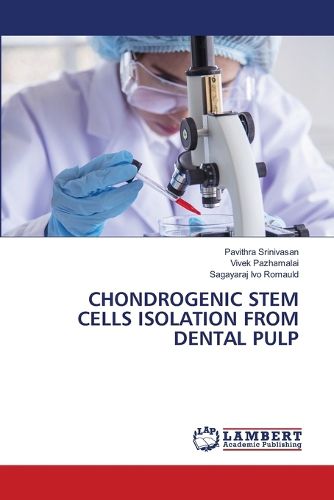Readings Newsletter
Become a Readings Member to make your shopping experience even easier.
Sign in or sign up for free!
You’re not far away from qualifying for FREE standard shipping within Australia
You’ve qualified for FREE standard shipping within Australia
The cart is loading…






This book discusses the isolation and utilization of chondrogenic stem cells from dental pulp for regenerative medicine and tissue engineering applications. Stem cells develop into any type of cells to form the different types of tissue in the human body. Chondrogenic stem cells can be isolated from dental pulp, which is the soft tissue found in the center of teeth. These stem cells, often referred to as dental pulp stem cells (DPSCs), have the potential to differentiate into various cell types, including chondrocytes (cartilage-forming cells). The isolation process typically involves extracting dental pulp tissue from extracted teeth, followed by enzymatic digestion to release the stem cells. Once isolated, DPSCs can be cultured and induced to differentiate into chondrocytes, making them a promising source for cartilage regeneration and tissue engineering applications. This approach leverages the regenerative properties of dental pulp to treat conditions like cartilage damage or osteoarthritis.
$9.00 standard shipping within Australia
FREE standard shipping within Australia for orders over $100.00
Express & International shipping calculated at checkout
This book discusses the isolation and utilization of chondrogenic stem cells from dental pulp for regenerative medicine and tissue engineering applications. Stem cells develop into any type of cells to form the different types of tissue in the human body. Chondrogenic stem cells can be isolated from dental pulp, which is the soft tissue found in the center of teeth. These stem cells, often referred to as dental pulp stem cells (DPSCs), have the potential to differentiate into various cell types, including chondrocytes (cartilage-forming cells). The isolation process typically involves extracting dental pulp tissue from extracted teeth, followed by enzymatic digestion to release the stem cells. Once isolated, DPSCs can be cultured and induced to differentiate into chondrocytes, making them a promising source for cartilage regeneration and tissue engineering applications. This approach leverages the regenerative properties of dental pulp to treat conditions like cartilage damage or osteoarthritis.